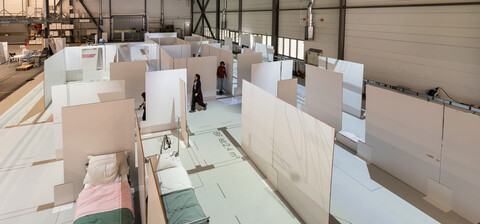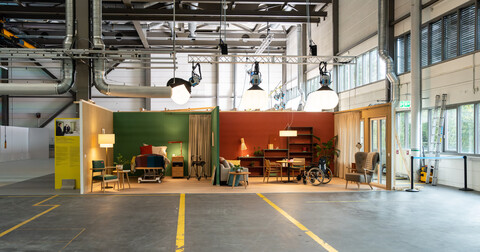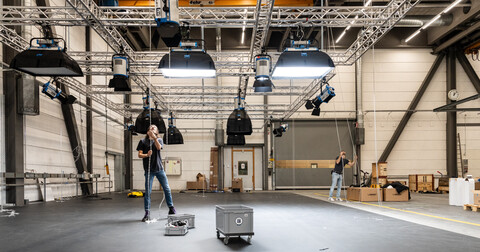Simulation and co-prototyping
Why simulation and co-prototyping is important
Design that supports health is tested by users. We will enable you and your users to try out solutions in advance and work together to improve them.
Benefits for you:
- Early detection and avoidance of flaws
- Faster development times
- Savings thanks to fewer subsequent improvements
- User-validated, real-world-ready solutions
We do simulations in these areas
Signage, guidance systems / Information design / Interaction design
The transmission of information and ideas that are presented graphically and swiftly perceived and understood – this is visual communication. We see it everywhere, all the time: in the form of signage in buildings, of signs and markings indicating a route in a city, an informational chart on a website, a poster campaign in public spaces.
Architecture, interior design / Urban planning, public spaces / Product design
The built environment encompasses not only architecture but also the places around it, the front yards or gardens, interior courtyards or shaped urban spaces. These places, and the objects and products within them were and are formed by us, by people, and, at the same time, they form the environment in which we live.
Service design / Organisation design
A service, a system, a process: these are not things that simply come into being. They need to be shaped, and they need to be continuously reshaped or refined. Only by consistently taking their users’ perspective into account, can one guarantee their alignment with the needs and expectations of those users. This approach results in needs-oriented systems, processes and services – and occasionally in changes that may involve the entire organisation.
Who do we do simulations for
Diverse target groups, individualised approach:
- Health institutions: pre-implementation testing of new space concepts, treatment processes and service concepts
- Planners and designers: validating designs and working with users to refine them
- Builders and public authorities: investment security through realistic testing before building work starts
- Industry and economy: optimising workplaces, production processes and safety policies
- Associations and advocacy organisations: practice-oriented development and testing of standards and recommendations
- Universities: research in realistic settings
Your advantages, at a glance
- Shorter development time: validating concepts and design ideas at an early stage lets you accelerate the entire development process.
- Substantial cost savings: flaws and the adjustments they require are identified in the testing and prototyping phase – before resulting in the necessity to carry out expensive changes.
- Greatest possible focus on users: close cooperation with final users ensures that the solution is optimally tailored to their needs.
- Innovative solutions: our approach promotes creative and often unconventional solutions that are feasibility tested.
- Risk minimisation: testing under realistic conditions reduces the risk of planning errors and user unfriendliness.
Process and terms
Individualised project design: time frame and content are determined jointly – based on the question to be addressed and your requirements.
Transparent cost structuring: fair pricing based on your specific requirements. We would be delighted to draw up a concrete offer for you.
In-person consulting: contact us to arrange a non-binding initial consultation. We will discuss your challenges and work with you to develop the optimal analytical approach.





